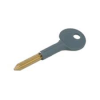synchronome
Member
Dear all,
I am new to the world of fuzes, but have a lot of experience with clocks (www.theclockworks.org). I am putting together a lecture on a range of clockwork devices made by S. Smith & Son, and would like to include the type 206 fuze as I have an example (and some foreign copies, I believe) and it forms part of a wider story I want to tell. I particularly want to video the release of the fuze and its running. I am loathe to start taking it apart without seeing if I can get any advice on its construction and operation (which I guess will be similar for the family of clockwork fuzes with similar numbers). Although I have watched the fuze run down, I do not know how it is wound, or indeed much about it altogether. Is anyone able to help guide me? I can be contacted direct at james.nye@kcl.ac.uk
With many thanks, in advance,
James
I am new to the world of fuzes, but have a lot of experience with clocks (www.theclockworks.org). I am putting together a lecture on a range of clockwork devices made by S. Smith & Son, and would like to include the type 206 fuze as I have an example (and some foreign copies, I believe) and it forms part of a wider story I want to tell. I particularly want to video the release of the fuze and its running. I am loathe to start taking it apart without seeing if I can get any advice on its construction and operation (which I guess will be similar for the family of clockwork fuzes with similar numbers). Although I have watched the fuze run down, I do not know how it is wound, or indeed much about it altogether. Is anyone able to help guide me? I can be contacted direct at james.nye@kcl.ac.uk
With many thanks, in advance,
James












